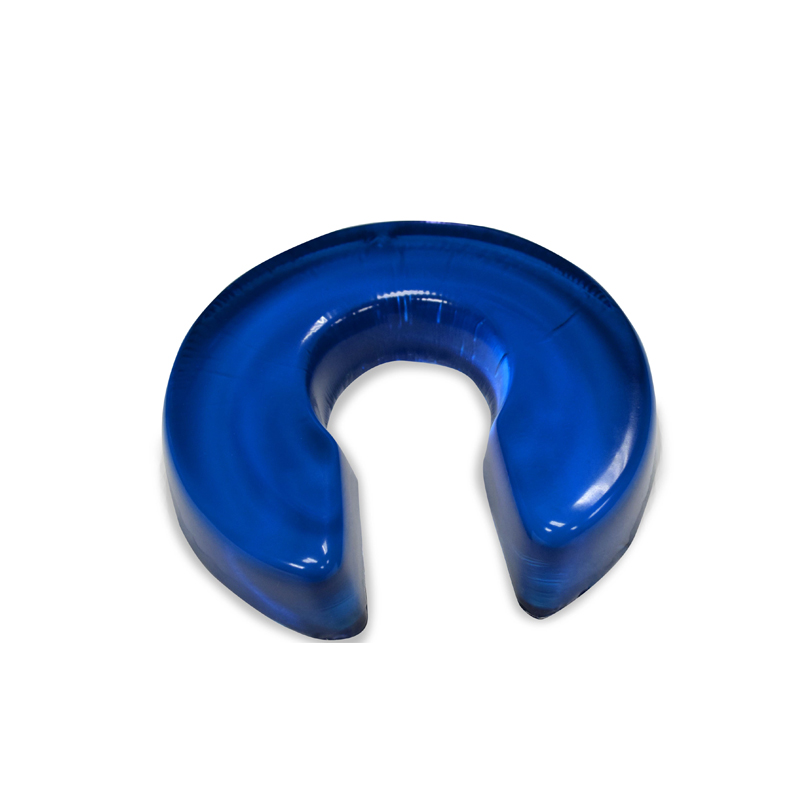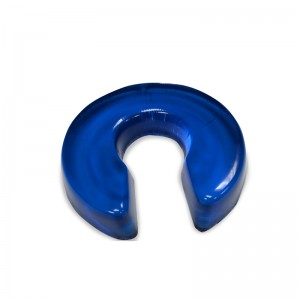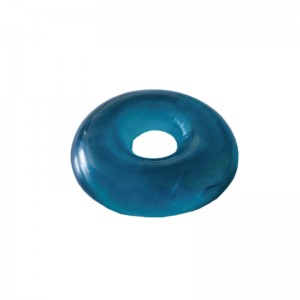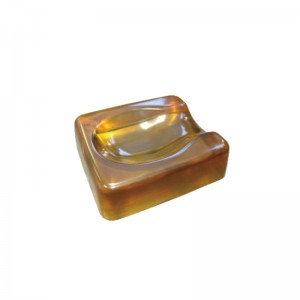
Horseshoe head positioner ORP-HH
Closed head positioner ORP-HH
Model: ORP-HH
Function
1. To protect and support patient's head, neck and face in supine, lateral and prone position during all types of surgery
2. Convenient for introduction of anesthetic pipes and intubation for patients in surgery
| Model | Dimension | Weight | Description |
| ORP-HH-01 | 8.6 x 8.6 x 2.2cm | 0.08kg | Neonatal |
| ORP-HH-02 | 15 x 15 x 3.5cm | 0.36kg | Pediatric |
| ORP-HH-03 | 21.3 x 21.3 x 4.3cm | 1.11kg | Adult |




Product parameters
Product Name: Positioner
Material: PU Gel
Definition: It is a medical device which is used in an operating room to protect patient from pressure sores during surgery.
Model: Different positioners are used for different surgical positions
Color: Yellow, blue, green. Other colors and sizes can be customized
Product characteristics: Gel is a kind of high molecular material, with good softness, support, shock absorption and compression resistance, good compatibility with human tissues, X-ray transmission, insulation, non-conductive, easy to clean, convenient to disinfect, and does not support bacterial growth.
Function: Avoid pressure ulcer caused by long operation time
Product characteristics
1. The insulation is non-conductive, easy to clean and disinfect. It does not support bacterial growth and has good temperature resistance. The resistance temperature ranges from -10 ℃ to +50 ℃
2. It provides patients with good, comfortable and stable body position fixation. It maximizes the exposure of the surgical field, reduce the operation time, maximize the dispersion of pressure, and reduce the occurrence of pressure ulcer and nerve damage.
Cautions
1. Do not wash the product. If the surface is dirty, wipe the surface with a wet towel. It can also be cleaned with neutral cleaning spray for better effect.
2. After using the product, please clean the surface of the positioners on time to remove dirt, sweat, urine, etc. The fabric can be stored in a dry place after drying in a cool place. After storage, do not put heavy objects on top of the product.
Anesthetic pipes and intubation are used in surgery.
Intubation is a procedure that can help save a life when someone cannot breathe. A healthcare provider uses a laryngoscope to guide an endotracheal tube (ETT) into the mouth or nose, voicebox, then trachea. The tube keeps the airway open so air can get to the lungs. Intubation is usually performed in a hospital during an emergency or before surgery.
Intubation is a process where a healthcare provider inserts a tube through a person’s mouth or nose, then down into their trachea (airway/windpipe). The tube keeps the trachea open so that air can get through. The tube can connect to a machine that delivers air or oxygen. Intubation is also called tracheal intubation or endotracheal intubation.
Why would a person need to be intubated?
Intubation is necessary when your airway is blocked or damaged or you cannot breathe spontaneously. Some common conditions that can lead to intubation include:
● Airway obstruction (something caught in the airway, blocking the flow of air).
● Cardiac arrest (sudden loss of heart function).
● Injury or trauma to your neck, abdomen or chest that affects the airway.
● Loss of consciousness or a low level of consciousness, which can make a person lose control of the airway.
● Need for surgery that will make you unable to breathe on your own.
● Respiratory (breathing) failure or apnea (a temporary stop in breathing).
● Risk for aspiration (breathing in an object or substance such as food, vomit or blood).
How is the tracheal tube removed during extubation?
● Remove the tape or strap holding the tube in place.
● Use a suction device to remove any debris in the airway.
● Deflate the balloon inside your trachea.
● Tell the patient to take a deep breath, then cough or exhale while they pull out the tube.







